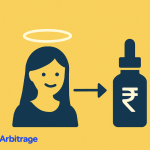This blog is your step-by-step playbook to building high-converting landing pages using free, beginner-friendly AI tools. Packed with pro tips and smart hacks, it’s perfect for content writers, marketers, and brand strategists who want to craft powerful landing pages that drive results—fast, easy, and without burning out.
Table of Contents
Introduction
I was at my wits’ end and, with dedicated focus, decided to ignore the avalanche of text messages. My client needed a landing page urgently, and I was all out of ideas. It was so bad I almost thought I would pray.
It was AI who answered my prayer.
But let’s make it more relatable.
Picture this: Your client just dropped a bombshell. They need a landing page that converts like crazy, and they need it yesterday. Meanwhile, you’re staring at a blank document, wondering how you’re supposed to craft something that’ll actually make people click “Buy Now” instead of bouncing faster than a cricket ball off MS Dhoni’s bat.
Sound familiar? If you’re an Indian content writer, you’ve probably been there. You know you can write killer blog posts and social media captions, but landing pages? That’s a whole different beast. They demand psychology, structure, and that magical conversion trick that turns visitors into customers.
A powerful landing page can boost conversions by 160% more than other online sign-up processes. With the right free AI tools and a solid framework, you can craft pages that rival those created by expensive agencies.
Ready to transform your landing page game? Let’s dive in.
The anatomy of a high-converting landing page: what makes people click?
Before we jump into the AI magic, let’s break down what actually makes a landing page work. Think of it like building a house – you need a solid foundation before you start decorating.
Every high-converting landing page has these core elements:
But here’s what separates the pages that convert from those that don’t: the perfect blend of psychology and structure.
Your page needs to build trust immediately while being ridiculously easy to understand. No fancy jargon, no confusing navigation – just a clear path from “hello” to “sold.”
For Indian audiences, this becomes even more crucial. Trust signals like money-back guarantees, customer testimonials in Hindi or regional languages, and familiar payment options (hello, UPI!) can make or break your conversion rates.
Instead of saying “Join thousands of satisfied customers,” try “Join 5000+ Indians who’ve transformed their careers” – it’s specific, relatable, and builds instant credibility.
The golden rule? Keep it simple, keep it trustworthy, and always remember that your reader is probably scrolling on their phone during their commute.
Your free AI toolkit: The writer’s essential arsenal
Let’s talk tools. The good news is that you don’t need to spend thousands on premium SaaS tools to create professional landing pages. Here’s your free AI toolkit:
ChatGPT (Free version) is your brainstorming buddy and writing assistant. Use it to generate structure, draft copy variations, and even role-play as your target audience to test your messaging. It’s like having a creative partner who never gets tired of your “what if we tried this instead?” questions.
Grammarly (Free) goes beyond grammar checking. It’ll help you nail the right tone, catch awkward phrasing, and ensure your copy flows smoothly. Especially useful when you’re switching between formal business language and conversational copy.
Canva (Free) isn’t just for Instagram posts. Use it to create wireframes, design CTA buttons, mockup trust badges, and visualize your page layout. Their templates can spark ideas even if you’re not designing the final page.
Hemingway Editor (Free) is your simplicity enforcer. Paste your copy here to identify complex sentences, unnecessary adverbs, and hard-to-read passages. If Hemingway flags it, your busy Indian entrepreneur probably won’t read it either.
Bonus tools: Claude and Gemini for tone polishing, Copy.ai for headline variations when you need fresh perspectives.
Why do these tools work perfectly for Indian writers?
They’re accessible, don’t require steep learning curves, and most importantly, they’re free. No need to convince clients to pay for expensive tool subscriptions – you can deliver professional results without the overhead.
Step-by-step landing page framework with AI prompts: your conversion blueprint
Now for the main course – your step-by-step framework for building landing pages that actually convert. Follow this process, and you’ll create pages that not only look professional but actually drive results.
Step 1: Define your goal and audience like a pro
The aim: Before you write a single word, you need laser clarity on two things: what you’re selling and who you’re selling to. This is where ChatGPT becomes your best friend.
The prompt: Start with this prompt: “Ask me 5 questions to define the target audience for a landing page selling [your product/service].” Let the AI dig deeper into demographics, pain points, and motivations.
For example, if you’re writing for an ed-tech company targeting Tier-2 city students, ChatGPT might ask about their educational background, career aspirations, budget constraints, and technology comfort level. These insights will shape every word you write.
Step 2: Craft your hero section and body copy
The aim: Your headline is make-or-break territory. Generate at least three headline and sub-headline combinations using ChatGPT.
The prompt: “Generate 3 headline + sub-headline combinations for a landing page selling [product/service] to [target audience].”
Instead of generic headlines like “Best Digital Marketing Course,” try something like “Master Digital Marketing in 60 Days – 100% Job Assistance Guarantee for Indian Graduates.” It’s specific, benefit-focused, and speaks directly to Indian job market concerns.
For your body copy, stick to the AIDA framework: Attention (headline), Interest (problem + solution), Desire (benefits + social proof), Action (clear CTA).
Use this ChatGPT prompt: “Write a 200-word landing page section using AIDA framework for [product/service] targeting [audience].”
Once you have your draft, run it through Hemingway Editor to ensure readability, then polish it with Grammarly for tone and clarity.
Step 3: Design CTAs that actually get clicked
The aim: Your call-to-action button is where conversion happens. Generic “Submit” buttons won’t cut it.
The prompt: Generate multiple CTA variations with ChatGPT: “Create 5 different CTA button texts for [your offer], varying from friendly to urgent to confident.”
Instead of “Sign Up,” try “Start My Free Trial,” “Get My Course Access,” or “Join 5000+ Successful Students.”
Pro tip: Test different tones – what works for a SaaS product might not work for an educational course.
Use Canva to visualize your CTA buttons. Experiment with colors, sizes, and placement. Remember, if your CTA doesn’t stand out, it won’t get clicked.
Step 4: Build unshakeable trust signals
The aim: Trust is everything in the Indian market. Create social proof that resonates with your audience.
The prompt: Use ChatGPT to generate testimonials: “Write 3 sample testimonials for an Indian coaching program, including specific results and locations.”
Pro tip: But don’t stop at testimonials. Add trust signals that Indian audiences recognize: customer logos, UPI payment badges, “Money Back Guarantee” badges, and contact information, including WhatsApp numbers.
Create trust bars in Canva like “Trusted by 3000+ students across India” or “5-star rated by 500+ professionals.” These visual elements build credibility faster than paragraphs of text.
Step 5: Create the wireframe
Before writing the final copy, create a simple wireframe in Canva. Map out where your headline, CTA, trust signals, and social proof will go. This visual planning prevents you from cramming everything above the fold or burying your CTA at the bottom.
Pro tip: For Indian audiences, remember that 80 %+ of traffic comes from mobile devices. Your wireframe should prioritize mobile-first design with clear fonts, bright (but not overwhelming) colors, and easily tappable buttons.
Common mistakes that kill conversions (and how to fix them)
Even experienced writers make these critical errors. Avoid them, and you’ll already be ahead of 90% of landing pages out there.
Mistake #1: Using overly formal English. “Avail our esteemed services to leverage synergistic solutions” sounds impressive, but it converts terribly.
Instead, write like you’re talking to a friend: “Join our course and get the skills you need.”
Mistake #2: Ignoring mobile users. If your landing page doesn’t work perfectly on mobile, you’re losing most of your Indian audience. Test everything on your phone before calling it done.
Mistake #3: Missing local trust signals. Copying Western landing pages without adapting them for Indian audiences is conversion suicide. Add WhatsApp support, UPI logos, and India-specific testimonials.
Mistake #4: Using jargon that AI can simplify. When in doubt, ask ChatGPT: “Rewrite this paragraph in simple language that a college graduate would easily understand.”
The fix is simple: Use AI to audit your copy. Paste your draft into ChatGPT and ask, “How can I make this clearer for an Indian audience who’s busy and skeptical?”
Test, improve, and dominate with AI
Your first draft is never your final draft. Use AI to continuously improve your landing pages through smart testing and iteration.
Generate headline alternatives with this prompt: “Rewrite this headline in 3 different tones: urgent, friendly, and confident.” Test different versions to see what resonates with your audience.
Here’s a clever trick: Use ChatGPT to role-play as your target customer. Ask it to critique your landing page from that perspective. You’ll uncover objections and concerns you might have missed.
For live pages, consider using Hotjar’s free tier for heatmaps, but don’t forget the power of community feedback. Share your variations in Indian freelance communities on LinkedIn or Discord – real feedback from your peers is often more valuable than any analytics tool.
Your landing page conversion-boosting AI prompts
Here are five battle-tested prompts you can use immediately:
Conclusion
You now have everything you need to create landing pages that convert. The tools are free, the framework is proven, and the market opportunity is huge. Indian businesses are increasingly investing in digital marketing, and those who can craft compelling landing pages will be in high demand.
Start with one client project. Apply this framework step by step. Use the AI prompts. Test and refine. Before you know it, you’ll be the go-to landing page expert in your network.
Remember, the best landing page writers aren’t necessarily the most creative – they’re the ones who understand their audience deeply and communicate clearly. With AI as your writing partner and this framework as your guide, you’re ready to create pages that don’t just look good, but actually drive results.
Your clients are waiting for landing pages that convert. It’s time to deliver them.
FAQs
Q: Can ChatGPT’s free version really write a complete landing page?
A: Absolutely! While it won’t be perfect out of the box, it gives you a solid foundation. The key is editing for your specific audience and adding those Indian market insights that only you can provide.
Q: What if I don’t know enough about my client’s audience?
A: Use ChatGPT to generate the right questions to ask your client. Most clients haven’t thought deeply about their audience – helping them define it adds value to your service.
Q: Should I only write copy, or should I provide design guidance too?
A: Offering a simple Canva wireframe sets you apart from writers who only deliver text. Indian clients especially appreciate this extra effort – it shows you understand the complete user experience.







 Allow notifications
Allow notifications
